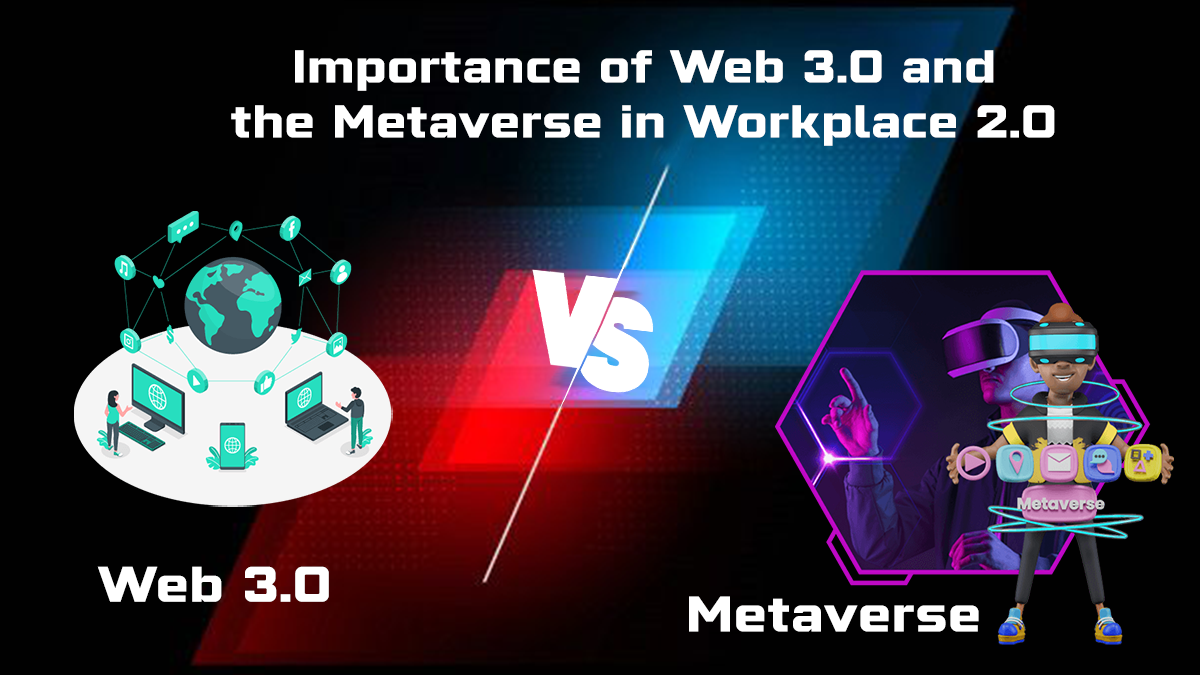The future of work is rapidly evolving, and with it comes the need to create new tools and platforms to support this expansion into the Metaverse and Web 3.0. We are on the verge of a revolution in how we work, live, play, and learn. This revolution will be driven by technologies such as immersive virtual reality (VR), augmented reality (AR), artificial intelligence (AI), robotics, Internet of Things (IoT) devices, machine learning, and more.
Web 3.0 and Why It Matters
The Internet is not a web—it’s a network, often referred to as the World Wide Web. Web 1.0 was a static document that mostly served as an information repository for people who wanted to learn about something or find something out. Web 2.0 was a social network that allowed people to share information interactively via blogs, wikis, podcasts, and chat rooms among other things.
Web 3.0 is a decentralized online space that runs on the blockchain. It uses cryptography and game theoretic principles to give users control over their data and content. They can freely transact their data without intermediaries while maintaining ownership and privacy.
What is the Metaverse?
The metaverse is a virtual world where users interact with other people, objects, and data in real-time from any point on earth. Users can communicate with anyone they want to, download or upload anything they please, travel to any place they desire, and do all this without ever leaving their homes. Imagine a world where the boundaries of your living room expand infinitely into space; you can walk around inside your computer screen as if it were an open landscape that continues infinitely in every direction until you reach its borders.
Technological effect on society
This technology is expected to change how we work and live, so we need to understand what these changes might mean for society. Some experts believe that this technology will create a new world where people are more interconnected than ever before, while others predict that there will be less human interaction because people will be more isolated in their worlds.
Day-to-day use
We all know how technology has improved our daily lives by making it easier to communicate, live healthier lives, and consume more content in less time than ever before. It is only natural that we would want to take this advancement in technology to the workplace as well. With Web 3.0 and the Metaverse, employees can do their jobs without having to be physically present at their desks all day long.
Technology availability
Why not make this technology available to everyone, for free? With open-source software, it would be possible for every person on earth to have access to Web 3.0 and the Metaverse within a few years. This could be accomplished by harnessing the incredible power of cloud computing with tools like Amazon Web Services or Microsoft Azure. It allows users to rent computing power at a moment’s notice, paying only for what they use while avoiding the need for expensive hardware that may sit idle most of the time.
Final Thoughts
The future of work has yet to be seen, but one thing is for certain – it will be vastly different than today’s workplace and have little resemblance to what we have come to know as ‘work’. It will not be 9-5, Monday through Friday with a two-day weekend break each month; instead, we will see more creative freedom for employees that don’t limit them to a specific location or time frame during which they can work.

